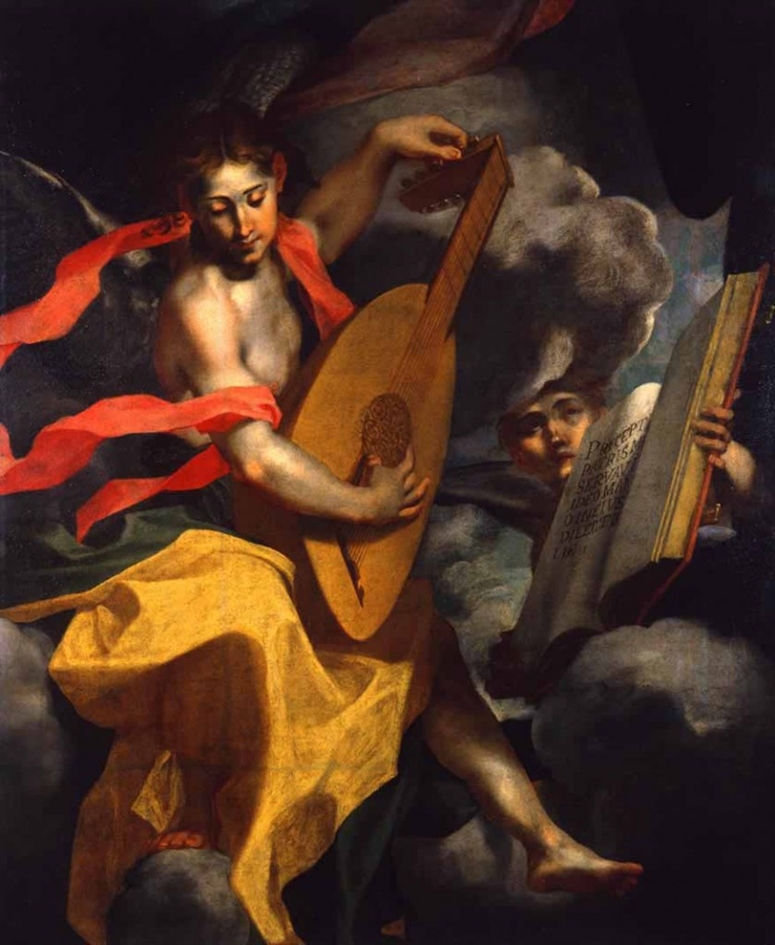Federico Barocci
“...tuning up this music”
A project in the occasion of the fourth centenary of the death of the artist
(1612 - 2012)
Short introduction
This project is the result of an historical/social research and of an artistic/musical production I am personally supervising on behalf of Bella Gerit ensemble; both the research and the production are connected to the Renaissance period in Urbino and follow the recording and distribution of unpublished musical work in the three CDs:
“La Dolce Vista – musica al tempo di Federico da Montefeltro (Codex Urbinate Latino 1411)”
“Nuptiae Factae Sunt – musica al tempo di Raffaello (Medici Cidex 1518)”
“De Divina Propotione (Codex Urbinate Latino 1419)”
The project
This not only musical project* aims at celebrating the great painter of Urbino and the important anniversary falling this year.
It aims at revising and reviving the delicate historical and cultural period where the artist lived and worked through the reconstruction of coeval artistic events.
These were the years when the Council of Trent took place – it ended in 1563 – and the Church layed down rules and controlled even the atistic field – music and painting especially.
Because of this background, the greatest artists working in the sphere of influence of the two Dukes of Urbino – Guidobaldo II della Rovere first and, from 1574, his son, Francesco Maria II della Rovere – were obliged to submit and conform to the new ecchlesiastic instructions. That’s why they show similar characteristics even in different artistic branches.
So we can associate the fluent and purified musical language by Costanzo Porta (1529– 1601), who is the real Della Rovere messenger thought his laudatory compositions, to the colour symphomy coming out of the Barocci’s paintings and enveloping the observer as an extraordinary and magic melody. As a matter of fact, according to Federico Barocci painting and music are equal: a painter is similar to a musician; he matches tones like a musician matches notes. Furthermore, as well as hearing enjoys a beautiful melody, sight must take pleasure in the harmony of colours features. Giovan Pietro Bellori (1613-1696), who is the first important biographer of Barocci, reported that once, while Barocci was painting, his patron, the Duke of Urbino Guidobaldo II Della Rovere, approached and asked him what he was doing. Showing him his painting, Federico answered: “I’m tuning up this music”.
We know Federico felt a deep attachment to his region. He continuously took his inspiration from the land he came from and above all from his town (Urbino) he loved very much. When in 1563 Federico left Rome, he decided he would never leave Urbino again: that’s why he often showed it in his paintings – especially the Palazzo Ducale – thus perpetually exalting it. It seems Urbino represents Federico’s Ideal Town, a sort of “castillo interior”, that is a holy place where you can keep your feelings and your dearest memories and that can be reached only through the models of ancient perfection enlightened by christian spirituality.
The project will be developed in various towns of the Marches and Umbria – that was part of the Urbino dukedom at the epoch -, but aims at crossing these borders and reaching other Italian and European towns housing Barocci’s masterpieces.

* Anyway music will be the link among all the events, since Federico Barocci “chiamava la pittura musica e diceva che sì come la melodia delle voci diletta l’udito, così ancora la vista si ricrea dalla consonanza de’ colori accompagnata dall’armonia de’ lineamenti”. (Giovan Pietro Bellori).